Another week has passed, which has brought us a lot of new things. In addition to the Android 11, which is now out of the beta stage, appeared Android Go for budget smartphones. He will not only give them new functions, but will ensure their normal operation. Let's see what will come of it, and which smartphones will get it. And this week it became known about the new version of the operating system from Huawei and about a strange request from Samsung. The essence of this request is to be allowed to sell chips Huawei despite the ban. It looks a little strange, but it cannot be said that the situation is not interesting. All of this and more will be discussed in our traditional weekly news release.
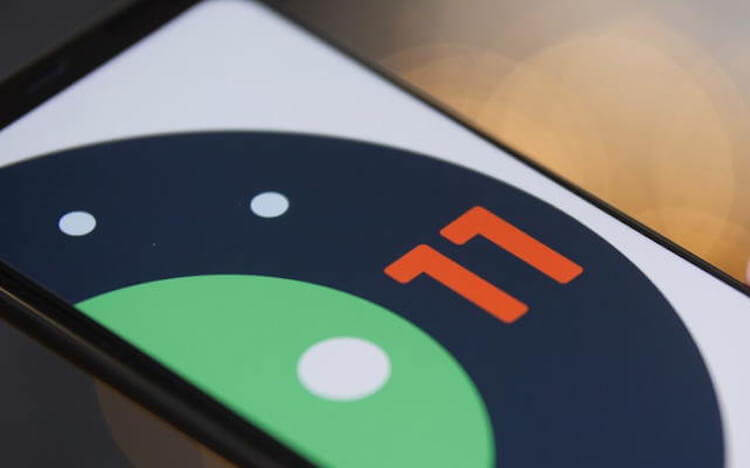
She went out!
Exit Android 11
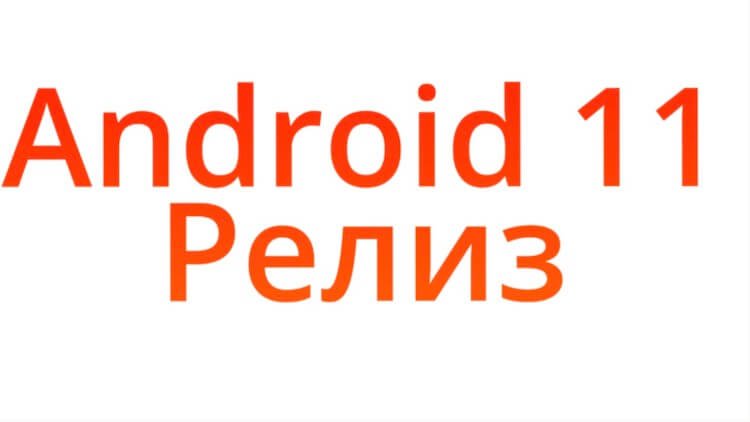
Android 11 is out officially. It's a pity, not for all devices
I never really understood how Google has a release scheme Android. Unlike Apple, the search giant, instead of giving a presentation and talking about the update, silently launched a beta test for developers, which lasted several months, and only then convened an official event to explain what innovations are worth wait. But no one announced the official release date anyway, inviting users to find out about the release of the update after the fact. With Android 11 the same thing happened.
Google officially released Android 11 this week, but the release was rather sluggish. Not only were users simply not ready for it, because they did not know when to wait for the update, but it also became available only for a limited number of devices. By tradition, they turned out to be Google Pixel smartphones, which have already begun to receive a new version of the OS. OnePlus, Xiaomi, Realme, Oppo and Samsung will soon join them. True, as usual, it is the flagships that will be updated first, and then all the others.

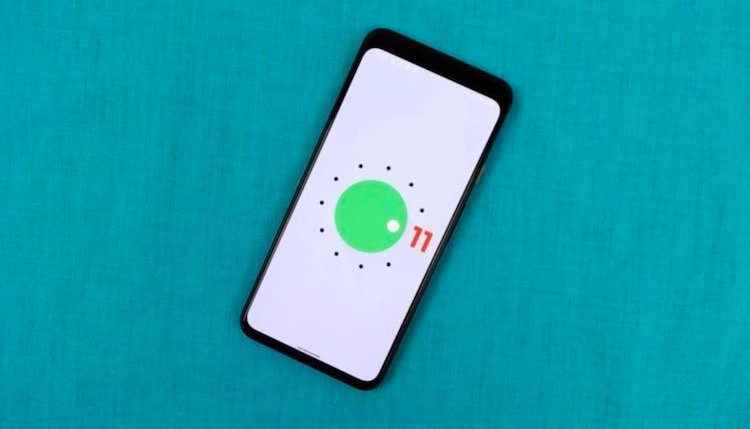
Android 11 – not such a big update
From the point of view of innovations Android 11 can hardly be called a major update. Most of the new features could be part of a mid-year mid-year mid-year update like Apple. However, here they are:
- History of notifications, where you can see all notifications, even if they were accidentally closed;
- Pop-up bubble chats that appear on top of other apps;
- Screen recording function, which allows you to enable video recording directly from the notification curtain;
- Scoped Storage mechanism, which divides the storage into several independent cells so that applications do not have access to each other's data;
- Advanced privilege settings with the ability to choose for what period to grant applications permissions to access the camera, geolocation services and microphone: for a day, for one session, or only when using;
- A separate page for selecting maps on Google Play, where smart home control tools are also available;
- Disabling the use of beauty modes in the camera by default;
- Password autocomplete feature that offers a login-password pair right above the keyboard;
- New playback control panel right in the notification shade with expanded functionality;
- The function of digitizing documents, which, however, will not be available to everyone and everywhere due to legal restrictions;
- Smartphone control by tapping on the back cover as in iOS 14.
In general, there are really many new features, but they do not make you admire the ingenuity of Google developers, leaving the impression that they themselves did not know how to surprise users. And the only significant innovation turned out to be old. After all, the mechanism for dividing memory into separate Scoped Storage cells was planned to be launched back in Android 10, but then the application developers said that they would not have time to adapt the software to the new requirements, and it was decided to postpone the release for a whole year, exactly until Android 11.

There will be quite a few smartphones that will receive Android 11. But it is not known when they will receive the update.
As for the devices that will receive Android 11, there are not so few of them. Here are just the main ones:
- The entire Galaxy S10 lineup
- The entire Galaxy Note 10 line
- The entire Galaxy Note 20 line
- Entire Galaxy S20 line
- All Galaxy A range (2019/2020)
- Xiaomi Mi 9
- Xiaomi Mi 10
- Huawei P20, P30, P40
- Huawei Mate 20, Mate 30, Mate 40
- Entire line Honor 20
- All OnePlus smartphones from 6th model
- All Oppo smartphones, Realme and Vivo 2019-2020
Of course, it is impossible to take into account all smartphones that shine Android 11. Firstly, some of them have not yet come out, and, secondly, the manufacturers themselves are not yet very willing to give promises regarding the timing of the renewal of branded devices. Therefore, if you suddenly did not find your smartphone on this list, do not be discouraged. Just keep in mind that if it was released in 2019-2020, most likely the update will get to it sooner or later. Of course, only if it's not a smartphone Xiaomi.
Exit Android Go
Few know that Android has been around for quite some time in two iterations. One is a full-fledged OS that runs the vast majority of smartphones, and the other is stripped down. It is installed on the entry-level phones with weak hardware and poor performance. It is called Android Go, but, although it is as lightweight as possible, it receives the same updates and innovations as the main operating system, albeit with a slight delay. For example, as happened with Android 11 Go.
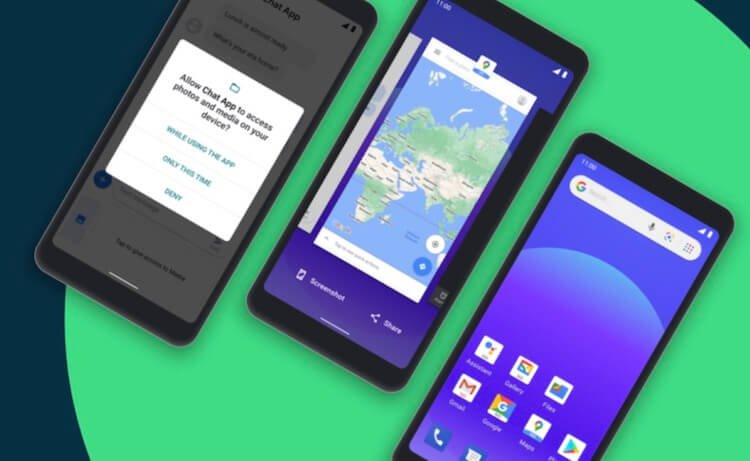
Android Go received a major update
Google released Android 11 Go for entry-level devices this week. The developers of the search giant have done a great job of optimizing the operating system to make it as fast as possible and at the same time not devoid of basic functionality. Unfortunately, this had to raise the system requirements a little. If earlier smartphones on Android Go could have a maximum of 1-1.5 GB of RAM, now all devices with 2 GB of RAM should work on a stripped-down version of the OS.

Android 11 Go has almost all the same innovations as in Android 11
Most of the innovations of the main version Android 11 will be available in Android 11 Go:
- Pop-up chat bubbles on top of apps;
- One-time application permissions;
- Division of memory into independent Scoped Storage cells;
- History of incoming notifications;
- Screen recording function;
- Prohibiting the use of beauty mode in the camera by default;
- Improved password autocomplete mechanism.
However, there are also some innovations that cannot be found in the classic version Android 11. In this case, we are talking about a 20 percent increase in application launch speed. Google developers have partially rewritten the operating system program code and as a result simulated a hot start on a cold one. Simply put, now applications will launch as quickly as if they were already running and all this time were in standby mode in the background.

2GB RAM – new minimum for Android 11 Go
Despite the fact that now the maximum amount of RAM required to run Android 11 Go is 2 GB, this requirement applies only to new devices. For older machines running Android 10 Go, the update will be available regardless of RAM. So, at least, Google said. However, you need to understand that the actual release of Android 11 Go for old smartphones will depend solely on the desire of their manufacturers to support existing users and adapt the update for them at no cost.
According to Google developers, 2 GB of RAM will expand the capabilities of compatible smartphones. Indeed, thanks to the increase in RAM, devices will receive an additional 270 MB of free memory, which can be used to launch another 3-4 applications in the background. That is, it will directly affect the multitasking of the phone and will allow it not to unload running programs ahead of time. Coupled with Doze mode, which will keep them asleep and not waste battery life, this is a good and useful innovation.

So far, no manufacturer has promised to update their smartphones to Android 11 Go
But if in the case of the classic version Android 11 there were quite a few vendors who promised in advance to release a new version of the OS for their devices, then in the situation with Android 11 Go there was not a single one. Neither Nokia, nor Samsung, nor Motorola, nor other manufacturers that release smartphones on Android Go, have expressed a desire to optimize the fresh update. Therefore, it is highly likely that fans of the cut-down operating system will only be able to use Android 11 Go on new devices.
Will Samsung sell chips Huawei
The modern world is quite peculiar. This also applies to business. I'm not even talking about the fact that new promotion tools are now coming to the fore, including electronic platforms. I mean some global changes. For example, the same story that led to problems for Huawei. The United States first banned the company from using the services of its main partner – Google – and now it was excommunicated from the second main partner. The forced break Huawei with TSMC will not allow the company to quietly engage in smartphones without having a production base for its Kirins. Since September 14, production has completely stopped, but benefactors have already been found. As a result, Samsung asks the US if it can sell chips Huawei. This is how modern business is.

Huawei will not be easy.
Huawei is a company with wise leadership at the helm. It can make decisions that ultimately enable the company to grow. That is why they were able to think about ordering as many chips as possible from TSMC in order to ensure their existence until they can find a spare version.
As a result, TSMC worked overtime, but provided a stock of chips in warehouses Huawei. According to rumors, their number has reached 15 million pieces. This is very small considering that the company sold over 200 million smartphones in a year. And in the first three months of sales Huawei, the Mate 30 sold more processors than there are currently in stock.
Samsung and HK Hynix are now reported to have requested permission from the US to continue supplying semiconductor chips Huawei. Two South Korean chipmakers, along with MediaTek and Qualcomm, are handling such requests, Korean ET News reported.
All of these chipmakers have been hit by the US government's tightening trade restrictions on Huawei. In its latest report, the US Department of Commerce last month announced a new package of sanctions that could be imposed on the Chinese company to further harm its business.
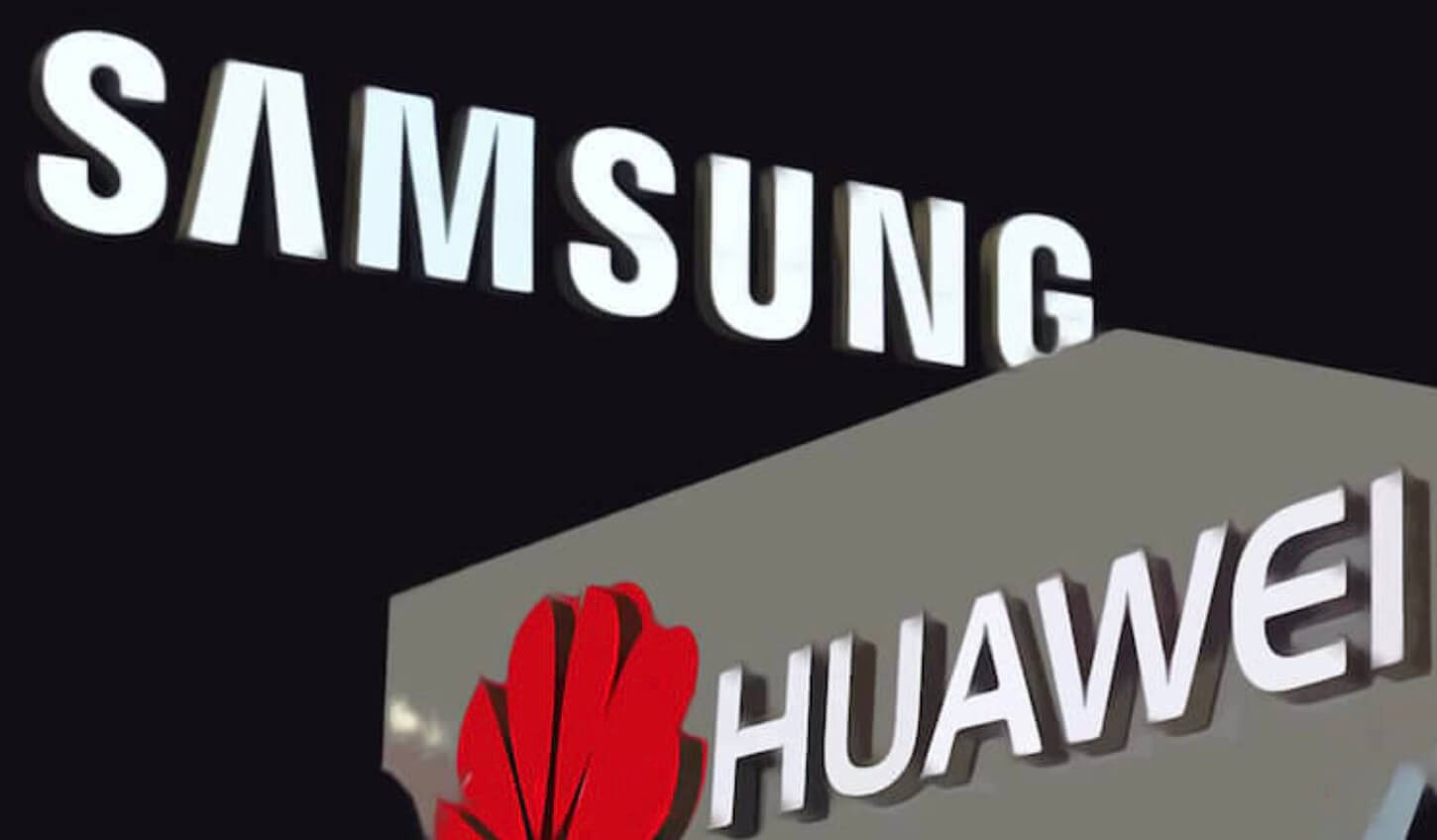
Samsung is friends with everyone.
The new rules prohibit Huawei access to any American technology, product or component. The company cannot even obtain components from a non-US firm using US-based software or technology. Given how widespread American technology is, and there is hardly a large company in the world that doesn't use it, the chances are slim. I'm talking about the chances of eventually finding a supplier who can get around the ban.
Chip makers can still apply for a special license that will allow them to continue trading from Huawei for a limited time. However, it is unlikely that the requests will be approved.
The new rules take effect on September 15th. That's when Samsung, HK Hynix and others will have to stop working from Huawei if their requests are not approved. Both companies have already confirmed that they will adhere to the rules, and if permission is not received, work with Huawei will be terminated.
Many multinational semiconductor manufacturers, including Samsung Electronics and SK Hynix, have applied for approval to the US Department of Commerce, a senior government official said. – Regardless of whether these requests are approved or not, they took the necessary measures before the US government imposed sanctions on September 15.
Starting next week, Samsung's display divisions and LG will also stop selling OLED panels from the Chinese company. Huawei mainly purchases displays from Chinese suppliers BOE and CSOT, so these measures will not have much impact on the company. However, since it cannot obtain DRAM chips and NAND flash chips from Samsung and HK Hynix, its smartphone business is facing a life-threatening situation.

The lock has already closed.
If there is a company that could benefit from the current situation where Samsung is unable to supply semiconductor chips and display panels Huawei, then it's Samsung itself. Both companies compete directly in several industries, including smartphones and telecommunications.
Samsung's network business is already booming due to US sanctions against Huawei. The company recently awarded Verizon a $ 6.6 billion hardware contract. At the same time, other countries continue to close their markets for Huawei, however, some with certain reservations. Even in the US, there is little room for Huawei to work.
In our democratic Telegram chat, you can express any attitude to this problem.
Now, the Chinese company's smartphone business troubles are also a hidden boon for Samsung. The company will remain in the black either way. It's just that the size of this plus may be slightly different. Of course, it's easier to work with a trusted partner, which is why Samsung applied. On the other hand, if the fish breaks loose, the vacated production capacity can start working on Apple, OPPO and Vivo. They can also make good money, and Samsung factories, most likely, will not stand idle. However, this situation is indicative in terms of how much money is spinning in this business, and how many people want to bite off a piece of this pie. In this case, preferably fatter.
What will be the Google Pixel 5
There is less and less time before the release of the Google Pixel 5, and it's time to talk about real images and real photos of the novelty. They usually appear about three to four weeks before the release of the smartphone. This time the photos were a bit of a disappointment, since we expect from a smartphone that it can become some kind of iconic and even exceptional one. New live photos refute this and disappoint us a little. The design of the camera attracts the most attention. I don’t know about you, but I definitely wanted him to be different. These are not all claims to the appearance. I don't want to lose hope ahead of time, but there is a possibility that the new product will not meet our expectations. But, as one famous footballer used to say: “Your expectations are your problems.”
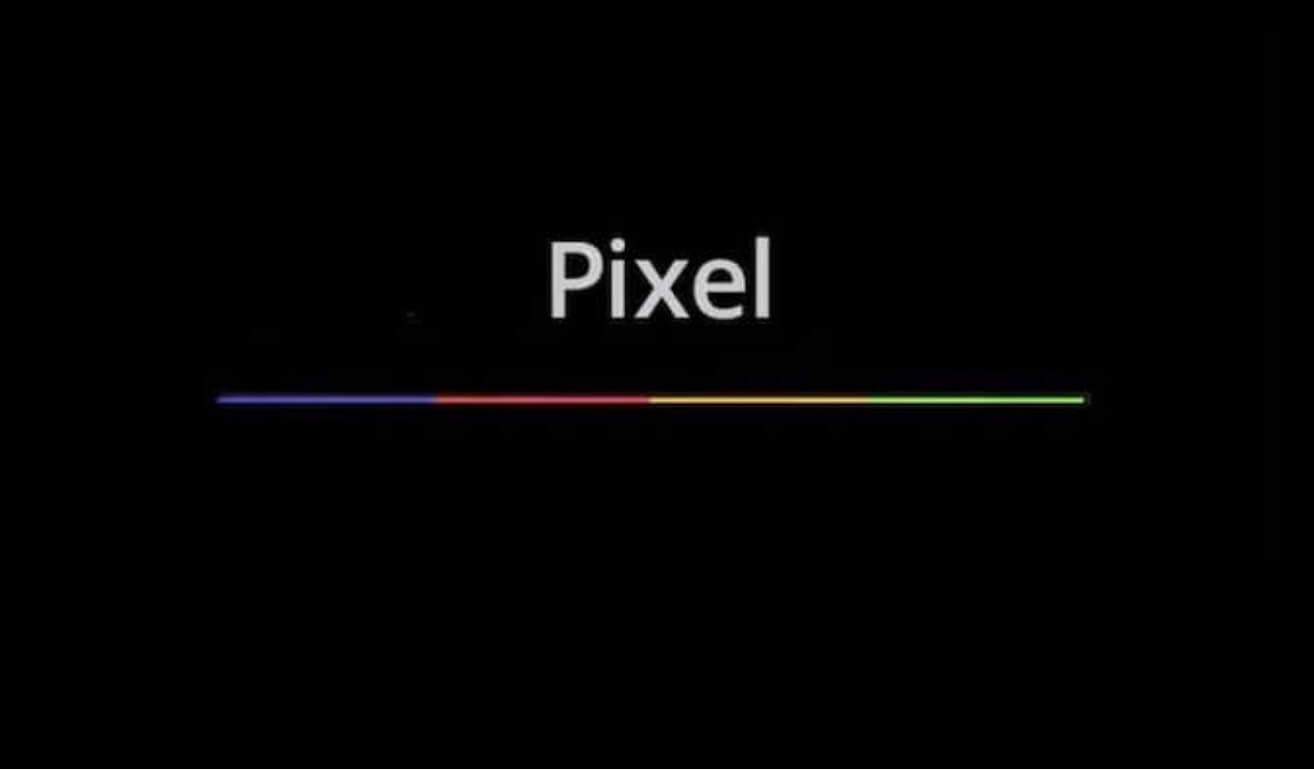
Google Pixel always stands apart among Android – smartphones
The photos that have appeared now really show what the new smartphone will be like. This is not the case when photographs may not correspond to reality and be something like a prototype or even fake. The smartphone is now ready. Perhaps the manufacturer will experiment with the colors of the case, the design of the box or the package for some time, but otherwise the smartphone must be ready, it cannot be otherwise less than a month before the presentation.
Many fantasized that the new smartphone will receive a completely new design, which has not been seen in other models before. In fact, it looks like the Google Pixel 4 and even the Google Pixel 4a.
These images appeared on Twitter, but the smartphone is still not one of those that go on sale. Although this is a ready-made sample, it is still for internal use and there is not even a logo on the back wall. Perhaps they are still experimenting with its location.
Although, for Google this is a common practice and they do not put their main logo on the internal copies. Something similar happened last year with the Pixel leaks. This is Google's approach.
Anyway, let's talk about design first. From what we can see in the photos, the Pixel 5 will be made of polycarbonate (plastic). Maybe the case will be metal, but this is unlikely, especially considering the trends that have been set by the market.
Why else might Google need it? It's simple – for wireless charging. If the back wall is metal, then this charging method will simply not be possible. Glass could be used, but that's not the Google way. It's also just expensive for this smartphone, the price of which Google will try to keep as low as possible.
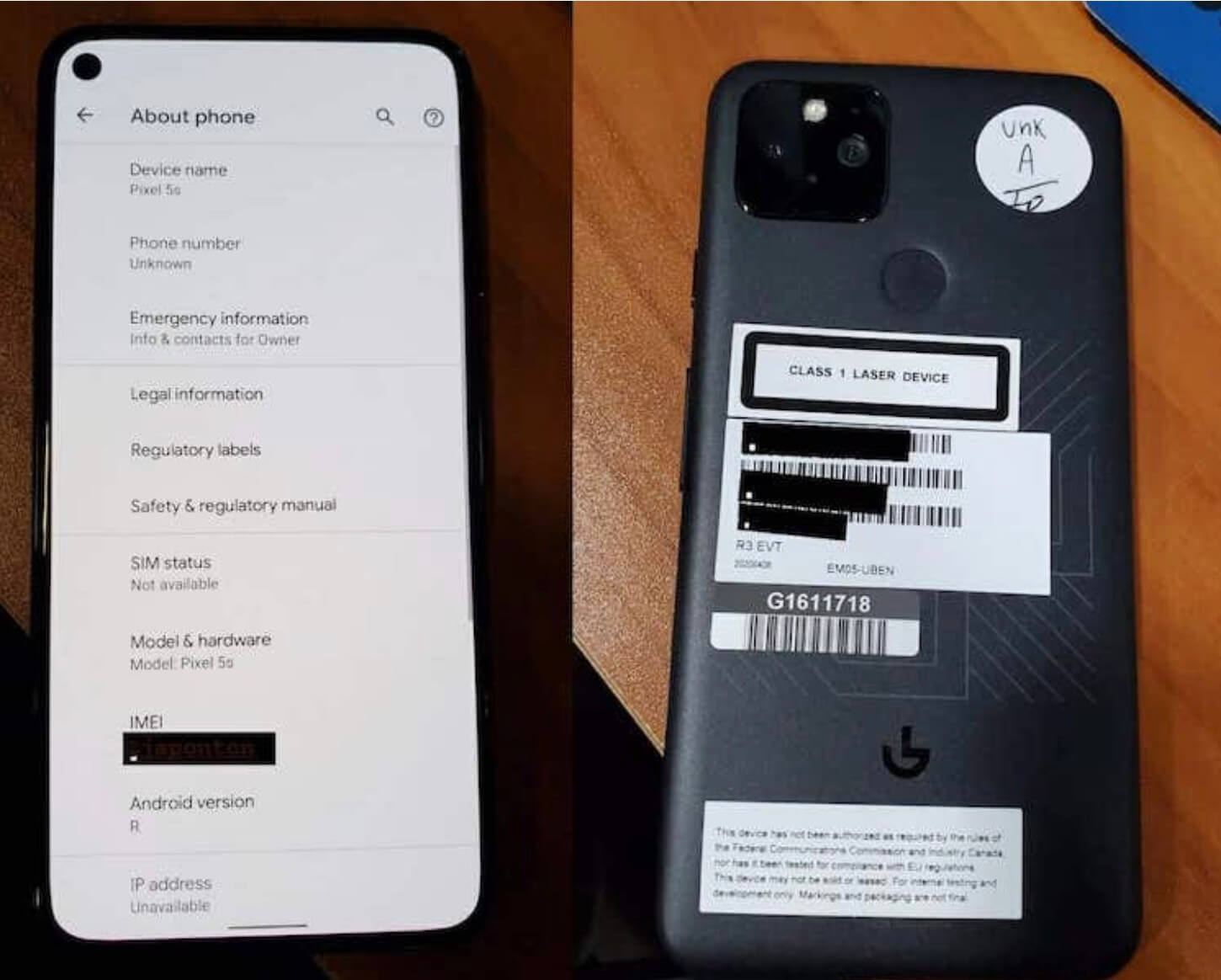
And here are the photos that leaked
In the corner there is a traditional-shaped camera module. It will not be round and will not shift somewhere to the side, for example, it will not stand in the center, as many renders predicted to us. But it is definitely worth saying thanks to Google for the fact that she did not drown for the camera zoom module and decided to stop at super-wideness. This option is much more convenient and useful. In the end, if you really need to zoom in on something, you can do it with a digital zoom, but you won't be able to zoom out.
In the photos you can see the traditional arrangement of the keys. The lock button is on the right side of the case, while the volume buttons are underneath. Many people find it more convenient when the power button is under the volume buttons, but here the opposite is true. But you can see that the back wall has a rounded shape on the sides. This usually makes it more comfortable to hold the smartphone in your hand and feels more compact and thinner.
Moving on to the front of the smartphone, you can see the very thin bezels, which at one time were a major problem with the Pixel in some previous generations. Now, it looks like things will be very modern. The camera is located in the hole and also looks very modern. Although, in such a place it is not the first time. Before that, a similar hole was on the Google Pixel 4a, which came out about a month ago.
The screen will not have the rounding, which some manufacturers continue to experiment with, and the speakers will be located under and above it, which should provide good stereo sound.
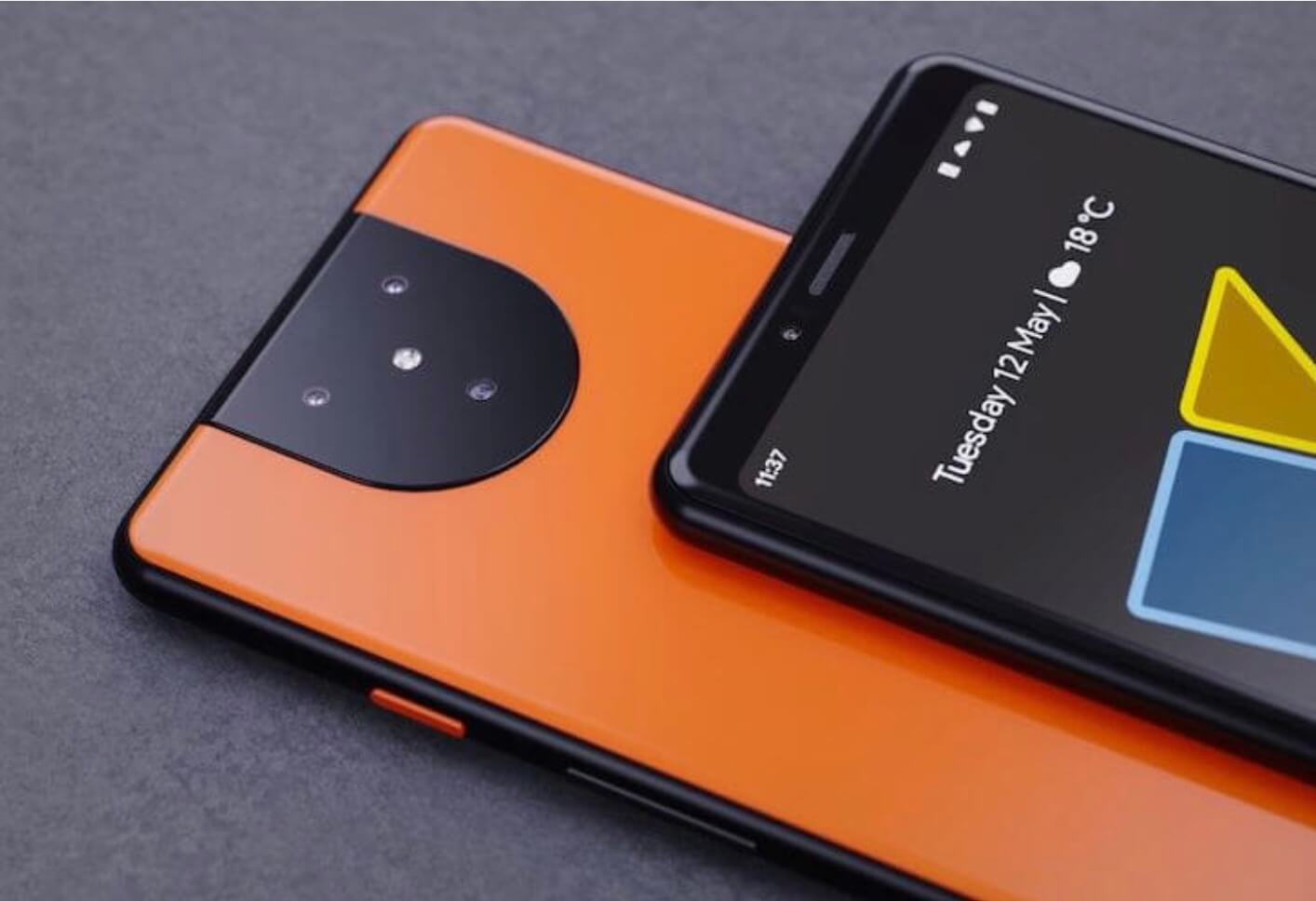
And I liked this concept. What do you think?
If you look more closely, you can see the model name on the smartphone screen and for some reason it is called Pixel 5s. Why exactly “s” is difficult to say yet, but most likely, such a symbol is used to designate a model 5G. It is assumed that the smartphone will be released in two versions – with the mmWave system 5G and without it.
The Google Pixel 5 is expected to be officially unveiled either in late September or early October, but the smartphone won't be on sale until October anyway.
It is expected to ship with a 64-bit Snapdragon 76 octa-core processor 5G. Rumors also hint at 8GB of RAM and OLED a high refresh rate display. We will find out more precise characteristics a little later, but for now, tell us in our Telegram chat what you think of it. Personally, I think that I would like something new, and the absence of a new design suggests that the company is not making a new chapter in its development out of the smartphone.
When Harmony OS 2.0 comes out
The Harmony OS, which, in the view Huawei, was supposed to replace Android on the brand's branded smartphones, always left me with the impression of something ephemeral. On the one hand, I seemed to know that it exists, but, on the other hand, I never even saw it in action. Therefore, it was hard for me to believe that Huawei really has a plan to transfer branded devices to its own platform, which, as it seemed to me, could hardly pull a TV, but not smartphones. But I was wrong.
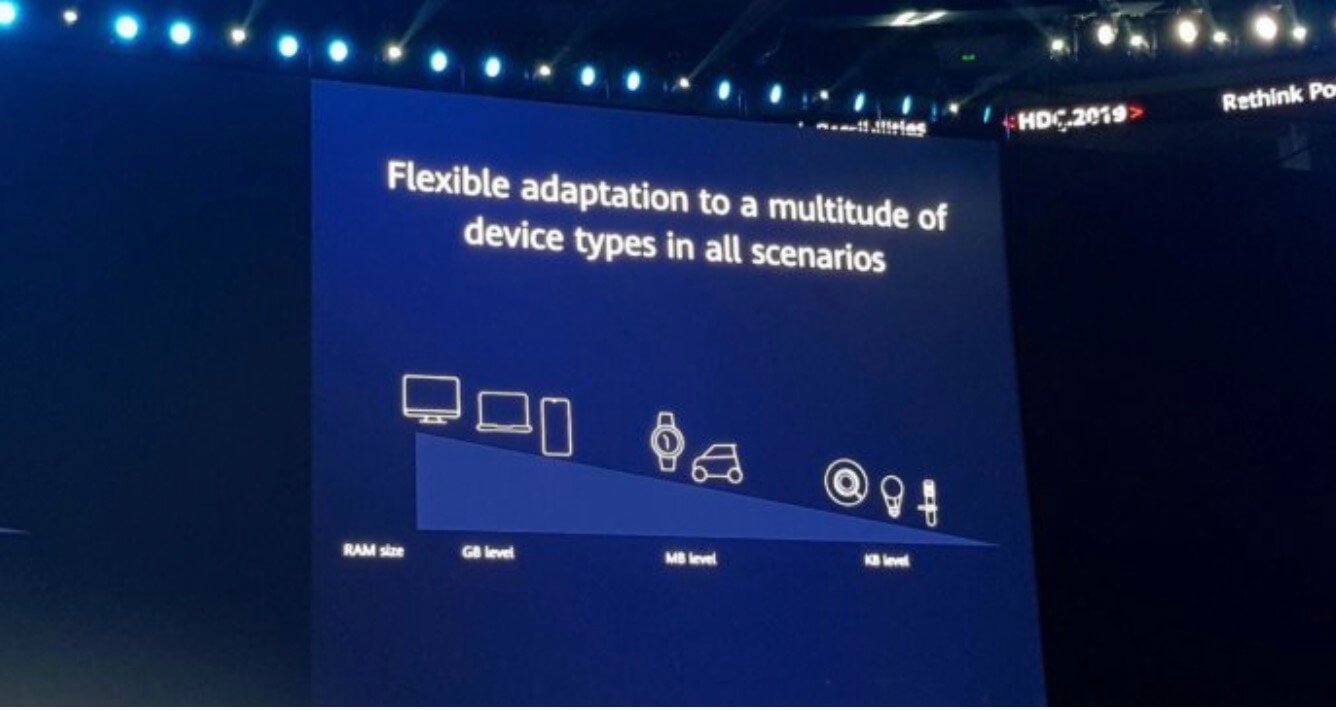
Huawei finally announced the launch of Harmony OS 2.0
On September 10, Huawei officially introduced Harmony OS 2.0 with support for several new types of devices: smart watches, smart TVs, smart home control hubs and smartphones. The beta version of the operating system for the first three types of gadgets is already available, and for smartphones it will be released a little later, on December 10. Despite the fact that Huawei took a short time out before launching the test version of Harmony OS for smartphones, it is obvious that the platform is almost ready and only needs minor improvements.

Harmony OS 2.0 will be available on four types of devices this year
The head of the consumer sector Huawei Richard Yu said that Harmony OS is already ready a few days ago. According to him, the company's proprietary operating system is already 70-80% close to the development level Android.
But if then it was just words, now we can know for sure that he spoke the truth. This means that only three months will pass, and Harmony OS will become available to everyone, albeit in the beta testing stage. But that's not the only good news. In Huawei, they expect that the first smartphone on the new OS will be released next year. But things will not happen as quickly as we would like. Here is the chronology that Huawei plans to follow:
- September 10, 2020 – Harmony OS 2.0 launches for devices with 128KB to 128MB of RAM;
- December 10, 2020 – Harmony OS 2.0 launch for smartphones;
- April 2021 – Harmony OS launches for devices with up to 4GB of RAM;
- October 2021 – Launch of a universal version of Harmony OS for all types of devices;
- October 2021 – OpenHarmony project launched.
In addition to Harmony OS 2.0 itself, Huawei this week presented the OpenHarmony project. It is an open source operating system that is analogous to Android Open Source Project. Third-party developers will be able to take the source code of Harmony OS as a basis and create their own firmware based on it.
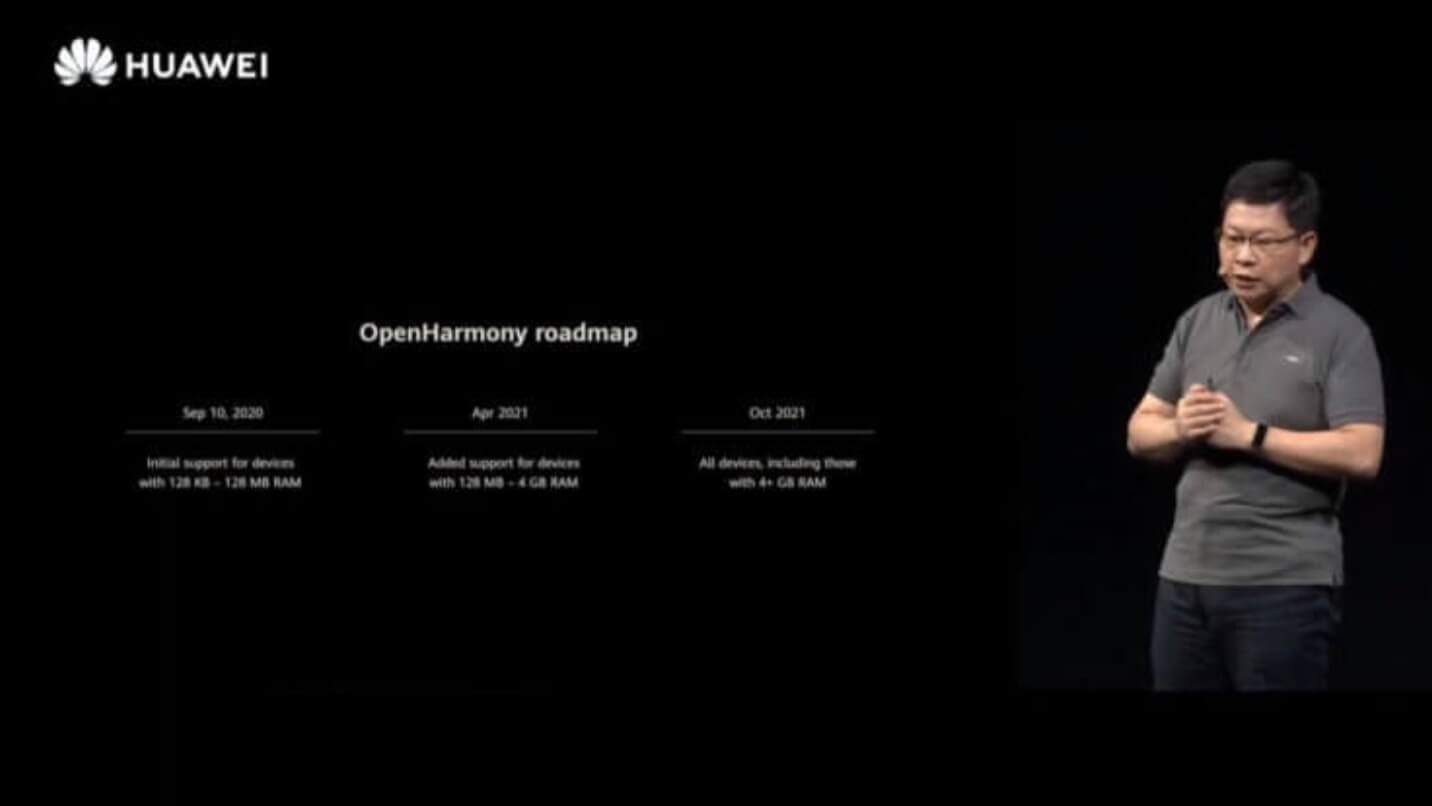
Huawei will open source Harmony OS for everyone
According to representatives Huawei, they place a lot of emphasis on Harmony OS performance as well as usability in the ecosystem. One of the functions available to users of the operating system will be the built-in ultra-high speed data transfer function. Apparently, it will be something similar to Nearby Sharing and AirDrop, but with much higher bandwidth. However, when exactly the launch of this innovation will take place has not yet been specified.
It is difficult to say yet if Huawei will be able to launch the smartphone on Harmony OS in 2021. Despite the fact that Richard Yu promised to do this, it is highly likely that the novelty will clearly not be in demand. The fact is that until the end of 2021, Harmony OS will only support fairly weak devices, which indicates that Huawei will have to launch a frankly budget model. However, maybe this is for the best. After all, hardly anyone will run headlong to buy an expensive flagship on an OS without clearly defined prospects.
